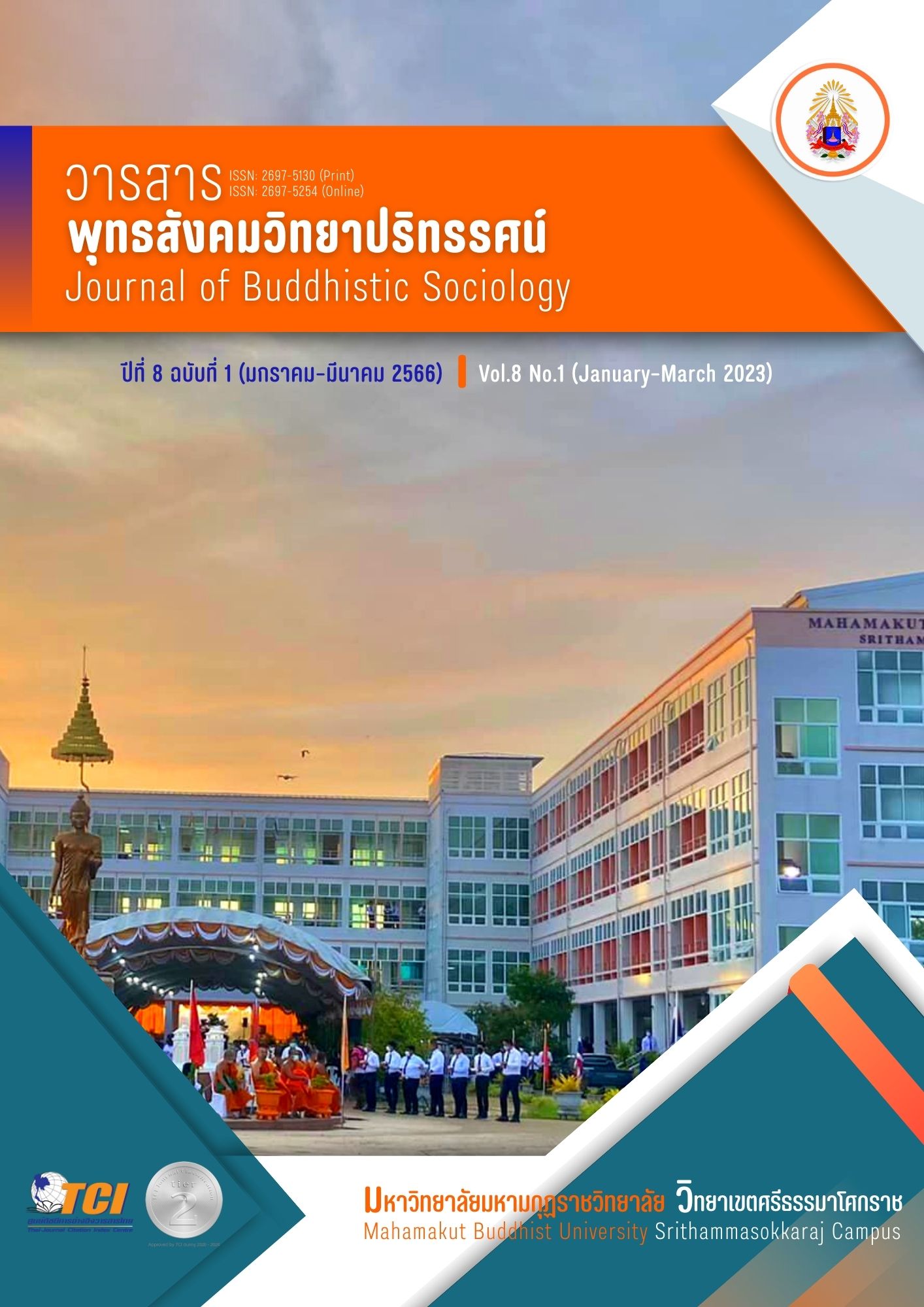COEXISTENCE FOR PEACEFUL SOCIETY USING SARANIYADHAMMA 6 IN MUANG DISTRICT, KRABI PROVINCE
Main Article Content
Abstract
This research aimed to 1) study coexistence for a peaceful society using Saraniyadhamma 6, 2) study the recommendations on the guidelines for coexistence for a peaceful society using Saraniyadhamma 6 in Mueang District, Krabi province with a population of 117,253 people. Using Krejcie & Morgan's Table to determine the sample size, the research gained a reliability level of 95% and the sample group for this research. The sample group consisted of 384 people: monks, community leaders, and academicians. The research tool used to collect data was the questionnaires, having the Indicator of Compromise (IOC) of each item of 1.00 for all items. The statistics used for data analysis were frequency, percentage, mean, and standard deviation.
The results showed that:
1. An application of Saraniyadhamma 6 in Muang District, Krabi Province, revealed that Thittisamunyata has the highest result average, followed by Sataranaphokee and Metamanokham. The lowest satisfaction average was Metakayakham.
2. The recommendations on the guidelines for coexistence for a peaceful society using Saraniyadhamma 6 in Mueang District, Krabi province: there are essential factors in promoting coexistence for a peaceful society as follows: being mindful and considering various problems with intellect can lead society to peace. At the same time, the mind's expression of kindness by setting good intentions toward others can build a relationship that can be seen concretely and makes a peaceful society.
Article Details

This work is licensed under a Creative Commons Attribution-NonCommercial-NoDerivatives 4.0 International License.
References
กิตติกันตพงศ์ ศรีบัวนำ และคณะ. (2562). การพัฒนาตัวบ่งชี้การอยู่ร่วมกันอย่างเกื้อกูลในชุมชนเมือง. วารสารครุศาสตร์ จุฬาลงกรณ์มหาวิทยาลัย, 47(3), 46-63.
ณฐา แย้มสรวล. (2559). การประยุกต์หลักสาราณีธรรมเพื่อเสริมสร้างความปรองดองในการปฏิบัติงานวิชาชีพพยาบาลในโรงพยาบาลบางไทร จังหวัดพระนครศรีอยุธยา. วารสาร มจร สังคมศาสตร์ปริทรรศน์, 1(1), 49-58.
บุษบง ชัยเจริญวัฒนะ และเหมือนขวัญ เรณุมาศ. (2560). สันติวิธี: การจัดการความขัดแย้งตามแนวทางสันติวิธี. วารสารสันติศึกษาปริทรรศน์, 5(2), 1-16.
ประภาส แก้วเกตุพงษ์ และวิเชียร แสนมี. (2563). พุทธศาสนา : แนวคิดเรื่องสันติสุข. วารสารพุทธมัคค์ ศูนย์วิจัยธรรมศึกษา สำนักเรียนวัดอาวุธวิกสิตาราม, 5(1), 63-73.
พระครูอรุณสุตาลังการ. (2563). ความคิดเห็นของพระสังฆาธิการที่มีต่อการปรองดอง เพื่อสังคมสันติสุขในภาคใต้. วารสารมหาจุฬานาครทรรสน์, 7(12), 151-362.
อัครเดช พรหมกัลป์ และคณะ. (2563). การพัฒนากระบวนทัศน์และความเข้าใจทางพหุวัฒนธรรมกับการอยู่ร่วมกันอย่างสันติ. ใน รายงานวิจัย. มหาวิทยาลัยมหาจุฬาลงกรณราชวิทยาลัย.
อุทัย เอกสะพัง และไพฑูรย์ อินทศิลา. (2559). ความคิดเห็นของประชาชนที่มีต่อการบริหารงานตามหลักสาราณียธรรมของผู้บริหารเทศบาลนครนครศรีธรรมราช. วารสารมหาจุฬานาครทรรศน์, 3(1), 93-107.
Krejcie, R. V. & Morgan, D. W. . (1970). Determining Sample Size for Research Scillities. Education and Phychological Measurement, 30(3), 607-610.


